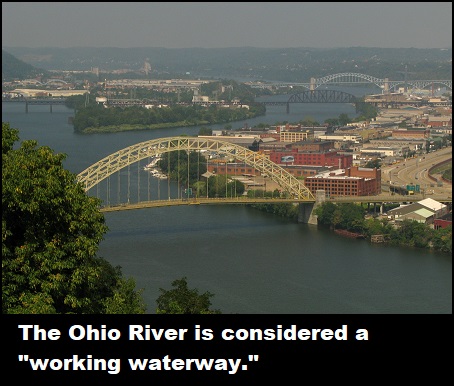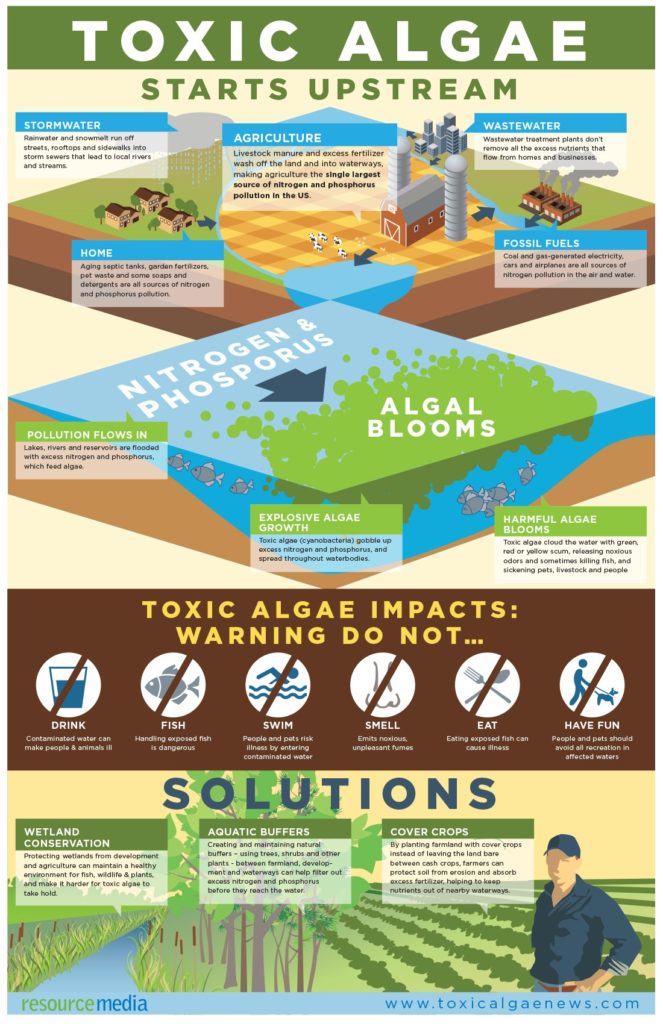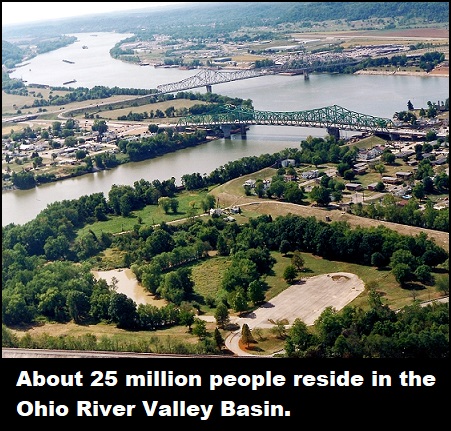Ohio River Tops List of Most Polluted
The Ohio River is the most polluted body of water in the United States.
In fact, more than 24 million pounds of chemicals were dumped into the Ohio River by industries and businesses in 2013. That’s according to the most recent Toxic Release Inventory report produced by the Ohio River Valley Sanitation Commission.
How Bad Is It?
Although this sounds alarming, that figure is actually down from the high point of 33 million pounds in 2006. About 92% of the pollutants are nitrate compounds, commonly found in pesticides and fertilizers.
And, even more surprisingly, the river technically meets the human health standards for nitrates. So minimal changes are being made in their regulation.
But nitrates on the only problem the Ohio River has. Levels of mercury — a potent neurotoxin that impairs fetal brain development — in the Ohio River increased by more than 40% between 2007 and 2013, according to EPA data.
On the Waterfront

 The Greater Cincinnati Water Works is well aware of the chemical levels in the Ohio River. Apparently, they have both carbon filtration and ultraviolet (UV) disinfection treatment systems in place to remove the toxins.
The Greater Cincinnati Water Works is well aware of the chemical levels in the Ohio River. Apparently, they have both carbon filtration and ultraviolet (UV) disinfection treatment systems in place to remove the toxins.
According to Jeff Swertfeger, Water Works’ Superintendent of Water Quality Management, “This facility is specially designed in order to remove the industrial-type contaminants like the gasolines, herbicides, pesticides, and things like that. If they get into the Ohio River and they get into the water, we can remove them here with our system.”
He added that the Water Works monitors chemical levels hundreds of times a day to ensure the drinking water is safe.
So Who’s to Blame?
Despite several clean-up initiatives and stricter regulation over the years, Ohio River industries still discharge more than double the amount of pollutants than the Mississippi River receives.

 Most of the toxic compounds emanate from AK Steel’s Rockport, Indiana, plant, according to environmental website Outward On. But the plant shifts the blame to farm run-off from nitrogen-based fertilizers. Currently, the EPA does not require farm run-off to be reported in their Toxic Release Inventory.
Most of the toxic compounds emanate from AK Steel’s Rockport, Indiana, plant, according to environmental website Outward On. But the plant shifts the blame to farm run-off from nitrogen-based fertilizers. Currently, the EPA does not require farm run-off to be reported in their Toxic Release Inventory.
Science has shown that nitrates contribute to toxic algae blooms and oxygen-depleted dead zones. (Once such area in the Gulf of Mexico, for instance, is about the size of Connecticut.)
One Vision for Restoration
But Collin O’Mara, President and CEO of the National Wildlife Federation, is hoping to ignite a new vision for the region’s most vital natural resources.
“Twenty-five million people live in the Ohio River Valley Basin,” O’Mara said. “That’s almost a tenth of the country. And yet we’ve seen virtually no investment of federal resources in trying to clean up the legacy pollution. The Ohio is still the most polluted waterway in the entire country.”
That is not acceptable, according to O’Mara. “We’ve been working with some of the mayors and different advocacy groups in the region, trying to just begin talking about the Ohio River as a system and [develop] a vision for the entire watershed.”

 Because the Ohio is considered a “working waterway,” it’s typically been treated as simply a support for larger industrial facilities. And while industrial jobs are important, O’Mara says, we cannot afford to degrade our waterways.
Because the Ohio is considered a “working waterway,” it’s typically been treated as simply a support for larger industrial facilities. And while industrial jobs are important, O’Mara says, we cannot afford to degrade our waterways.
“Right now across America, the outdoor economy is about a $646 billion economy. It employs more than six million people. And that puts it on par with many of the largest industries in the country. A lot of those jobs are water-dependent jobs related to fishing or swimming or outdoor activities. So one of the cases we’re trying to make is that it doesn’t have to be ‘either/or.’ The technologies exist now that we can actually have some industrial facilities and still not have to contaminate the waterway. ”
O’Mara added that “Given the political power that’s in the region between Pennsylvania, Ohio and Kentucky—I mean, you have some of the most important people in Washington that live along this watershed—there’s no reason why we can’t have significant investment go into the region.”
One thing is clear: Without significant change, the environmental future for the Ohio River is grim.
Hope Floats
But O’Mara is optimistic.
“If we can show progress in the Ohio River Valley…in a place that has a lot of legacy pollution…we can make it work anywhere.”
Until then, lest we forget what crystal clear water actually looks like:
Sources:
WLWT Cincinnati
Outwardon.com
WESA.fm
Environmental Law & Policy Center






